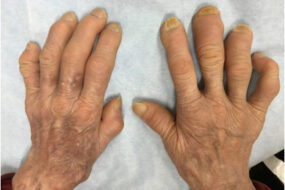- Home
- INTERNAL MEDICINE
- Rabies

Rabies is a viral zoonotic disease that affects the central nervous system (CNS), leading to encephalitis in humans and other mammals. It is almost universally fatal once clinical symptoms appear. The causative agent is the rabies virus, a member of the Rhabdoviridae family and Lyssavirus genus.
Epidemiology
- Global Distribution: Rabies is found on all continents except Antarctica. Over 95% of human deaths occur in Asia and Africa.
- Incidence: Approximately 59,000 human deaths annually, primarily due to dog-mediated rabies.
- Reservoirs: Dogs are the main reservoir in developing countries, while wildlife (bats, raccoons, skunks, foxes) serves as significant reservoirs in developed countries.
- Age and Risk Factors: Children under 15 years old account for about 40% of the cases due to increased interaction with animals. Individuals living in rural areas without access to post-exposure prophylaxis (PEP) are at higher risk.
Etiology
- Causative Agent: Rabies virus is an RNA virus that primarily infects mammals.
- Transmission:
- Bite or Scratch from an Infected Animal: The virus is present in the saliva of the animal.
- Non-Bite Exposures: Contact with mucous membranes or broken skin with infected saliva.
- Inhalation or Organ Transplantation: Extremely rare routes of transmission.
Pathophysiology
Virus Entry:
- The virus enters the body through a bite, scratch, or direct contact with mucous membranes or broken skin.
Local Replication:
- The virus replicates in the muscle cells near the site of entry.
Nerve Invasion:
- The virus enters peripheral nerves and travels retrograde along axons to the central nervous system.
- The incubation period varies (1-3 months), depending on factors such as the proximity of the bite to the brain, viral load, and host immune response.
CNS Involvement:
- The virus spreads to the brain, causing encephalitis and neuronal dysfunction.
- It then disseminates via nerves to other tissues, including the salivary glands, cornea, and skin.
Clinical Manifestations
Rabies progresses through several stages:
Incubation Period:
- Lasts 1-3 months but can vary from a few days to several years.
- No symptoms are present during this phase.
Prodromal Phase:
- Duration: 2-10 days.
- Symptoms: Fever, malaise, headache, and paresthesia or pain at the site of the bite (a characteristic feature).
Neurologic Phase:
- Duration: 2-7 days.
- Two forms are observed:
- Encephalitic (Furious) Rabies (80% of cases):
- Symptoms include hydrophobia (fear of water), aerophobia (fear of air drafts), agitation, hallucinations, seizures, and hyperactivity.
- Periods of hyperactivity alternate with periods of calm.
- Paralytic (Dumb) Rabies (20% of cases):
- Gradual muscle weakness and paralysis beginning at the site of the bite.
- Progresses to a coma without the classic symptoms of hyperactivity or hydrophobia.
- Encephalitic (Furious) Rabies (80% of cases):
Coma and Death:
- Without treatment, the patient progresses to coma and death within 1-2 weeks due to cardiorespiratory failure.
Diagnosis
Clinical Diagnosis:
- Based on exposure history and clinical presentation. Hydrophobia, aerophobia, and paresthesia at the bite site are considered highly suggestive.
Laboratory Confirmation:
- Saliva Testing: Detection of rabies virus RNA by RT-PCR.
- Skin Biopsy: Detection of rabies virus antigen in the hair follicles at the nape of the neck.
- Cerebrospinal Fluid (CSF): May show elevated protein and pleocytosis, but viral detection is necessary.
- Serum and CSF Antibodies: Detection of anti-rabies antibodies in unvaccinated individuals can be confirmatory.
Management
The primary goal of PEP is to prevent the rabies virus from infecting the central nervous system. The PEP protocol includes wound care, rabies vaccination, and in some cases, administration of rabies immunoglobulin (RIG). The specific components and administration protocols are detailed below.
1. Wound Care
- Immediate and thorough cleansing of all bite wounds and scratches with soap and water for at least 15 minutes is crucial.
- If available, a virucidal agent such as povidone-iodine or ethanol (70%) can be applied to further reduce the risk of rabies virus transmission.
2. Rabies Immunoglobulin (RIG)
Indications for RIG
- RIG is recommended for individuals who have not previously been vaccinated against rabies.
- It provides passive immunity by supplying anti-rabies antibodies until the patient mounts an adequate immune response to the vaccine.
Types of RIG
- Human Rabies Immunoglobulin (HRIG): Preferred due to lower risk of adverse reactions.
- Equine Rabies Immunoglobulin (ERIG): An alternative, less expensive option. It is purified and safer than older preparations, though hypersensitivity reactions can still occur.
Dosage and Administration
- Dosage:
- HRIG: 20 IU/kg body weight.
- ERIG: 40 IU/kg body weight.
- Site and Method of Administration:
- The full dose of RIG should be infiltrated into and around the wound site(s) to neutralize the virus locally.
- If the wound is large or there are multiple wounds, distribute the RIG evenly among the sites.
- Any remaining RIG that cannot be infiltrated around the wound should be administered intramuscularly (IM), usually in the deltoid or anterolateral thigh.
- Do not administer RIG in the same anatomical location as the rabies vaccine to avoid neutralizing the vaccine.
Special Considerations
- RIG should be administered as soon as possible after exposure, ideally within 24 hours.
- For severe exposure (e.g., extensive wounds or multiple bites), careful wound care and thorough RIG infiltration are essential.
3. Rabies Vaccination
Types of Rabies Vaccines
- Cell Culture Vaccines:
- Human Diploid Cell Vaccine (HDCV).
- Purified Chick Embryo Cell Vaccine (PCECV).
- Nerve Tissue Vaccines: Generally not recommended due to higher rates of adverse reactions.
Vaccination Schedule for Post-Exposure Prophylaxis
- The standard regimen for PEP in unvaccinated individuals involves a series of intramuscular injections.
- Intramuscular (IM) Regimen:
- Administer on days 0, 3, 7, and 14. A fifth dose on day 28 is sometimes included for immunocompromised individuals.
- The recommended site for IM injection is the deltoid muscle for adults or anterolateral thigh for small children.
- Avoid injecting the vaccine into the gluteal region, as this may reduce immunogenicity.
Intradermal (ID) Regimen (Alternative):
- In some countries, the intradermal route is approved and considered more cost-effective.
- Schedule:
- Two-site intradermal regimen on days 0, 3, 7, and 28.
- This involves administering 0.1 mL at each site (typically over the deltoid or thigh).
Pre-Exposure Prophylaxis (PreEP)
Indications for PreEP
- Recommended for individuals at high risk of exposure, such as laboratory workers handling rabies virus, veterinarians, animal handlers, and travelers to endemic areas.
PreEP Schedule
- Primary Series:
- IM: Three doses on days 0, 7, and 21 or 28.
- ID: Three doses of 0.1 mL each on days 0, 7, and 21 or 28.
Boosters and Monitoring
- Booster Doses: Required if there is ongoing risk of exposure.
- Serological Testing:
- For those at continuous risk, antibody titers should be checked every 6 months to 2 years, depending on exposure risk.
- A booster dose is recommended if the titer falls below 0.5 IU/mL.
Management of Previously Vaccinated Individuals
PEP for Individuals with Prior Vaccination
- Rabies Vaccine Only:
- Two doses of rabies vaccine on days 0 and 3.
- RIG is not necessary.
- Administration Sites:
- Deltoid muscle or anterolateral thigh.
Management of Symptomatic Rabies
- Once symptoms appear, supportive care in an intensive care setting is usually the only option.
- Milwaukee Protocol: An experimental treatment involving inducing a coma and administering antiviral drugs. However, the success rate is very low.
Prevention
Animal Vaccination Programs:
- Routine vaccination of dogs and cats reduces the reservoir for the virus.
Human Vaccination Programs:
- In high-risk populations or after potential exposure, vaccination is key.
Public Education:
- Raising awareness about avoiding contact with wild animals and the importance of wound washing and seeking medical care after a potential exposure.
Control of Wildlife Reservoirs:
- Programs for oral vaccination of wildlife, such as foxes and raccoons, have been implemented in some countries.
Complications
- Encephalitis: Results in severe neurological impairment.
- Autonomic Dysfunction: Can lead to arrhythmias, blood pressure instability, and other systemic complications.
- Secondary Infections: Due to immobilization and prolonged ICU stays.
Prognosis
- Before Symptom Onset: Near 100% prevention with timely PEP.
- After Symptom Onset: Mortality is almost 100%. Very few documented cases of survival.












